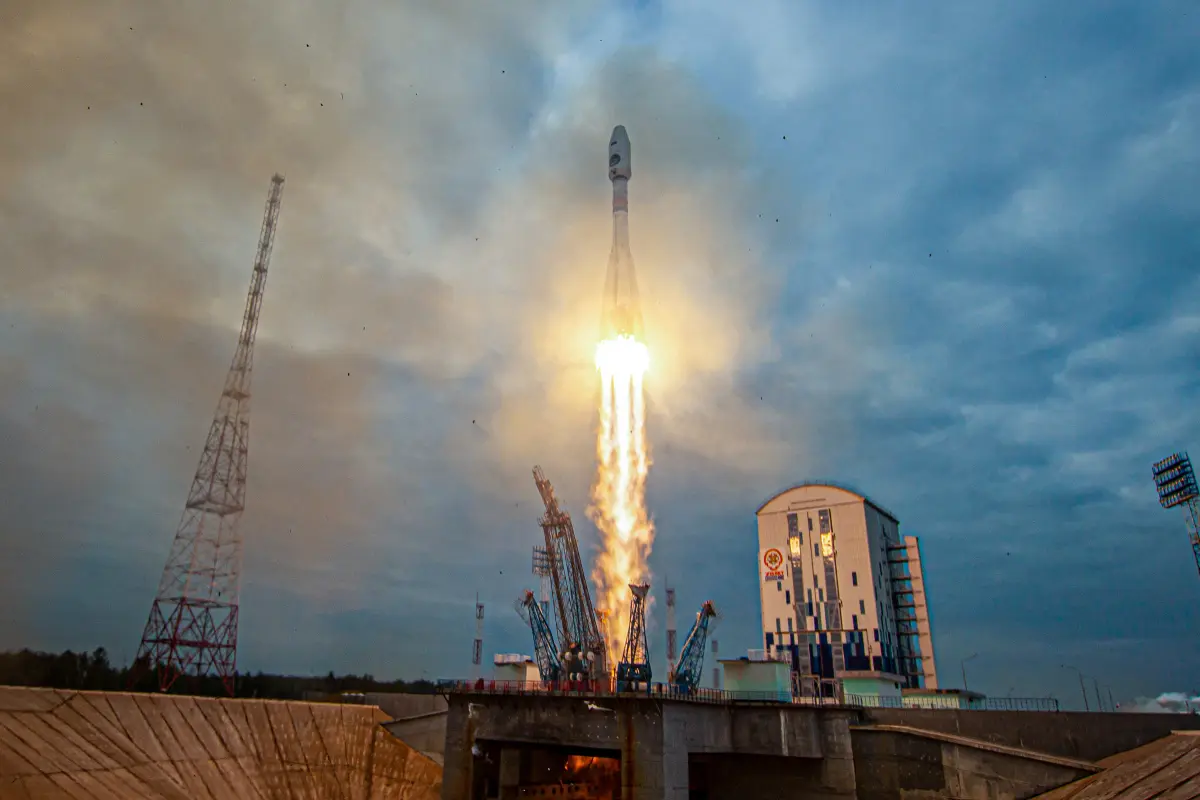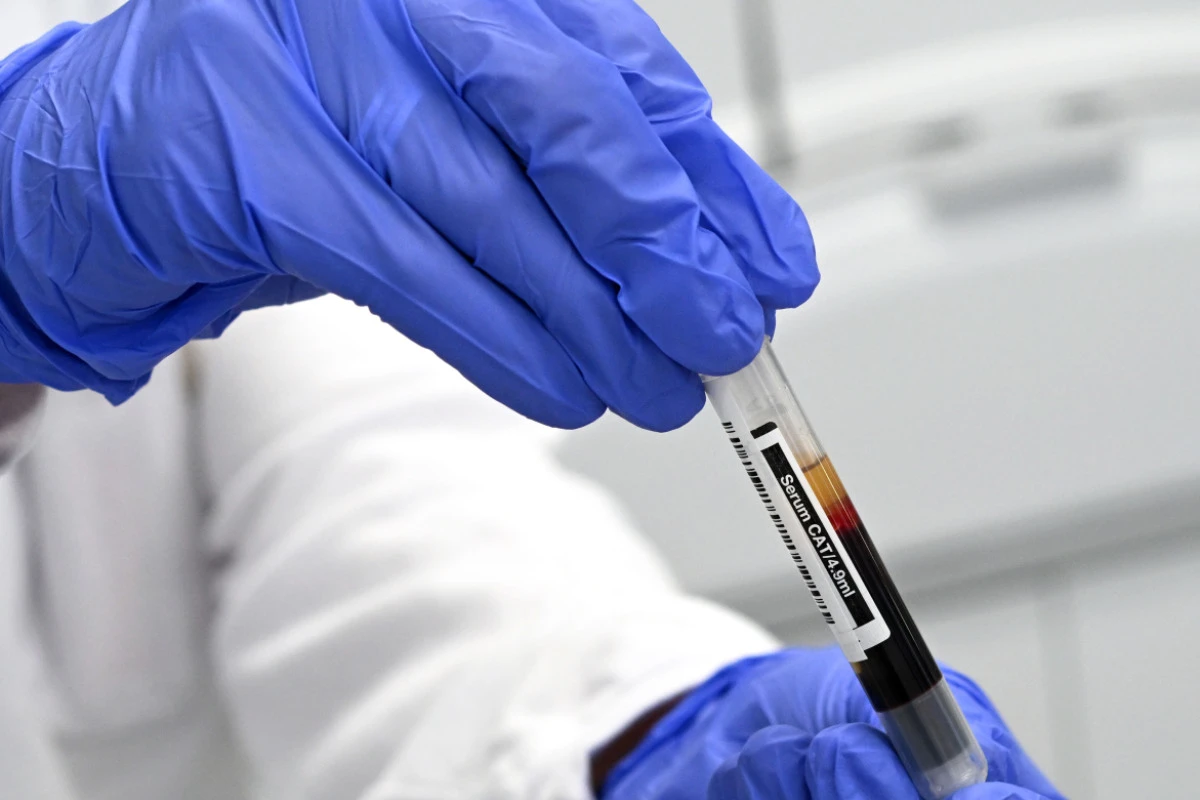von
Hauptaufgabe der Luna-26-Mission ist es, passende Landeplätze für die darauffolgenden Mondmissionen am Süd- und Nordpol des Erdtrabanten zu finden. Diese sollen dann 2029 und 2030 starten. "Weitere drei bis vier Jahre später läuft die Mission Luna-28, die Mondgestein zur Erde bringt", sagte Krasnikow der Zeitung.
Auch die geplante Mission zur Venus wird sich verschieben - und zwar gleich um mehrere Jahre. Laut Krasnikow soll die automatisch betriebene interplanetare Station Venus-D im Jahr 2036 in den Dienst gehen. Bisher war von 2031 die Rede. Ziel dieser Mission ist es, Oberfläche, Atmosphäre und den inneren Aufbau des heißen Nachbarplaneten der Erde zu untersuchen.
In this handout picture taken and released by the Russian Space Agency Roscosmos on August 11, 2023, a Soyuz 2.1b rocket with the Luna-25 lander blasts off from the launch pad at the Vostochny cosmodrome, some 180 km north of Blagoveschensk, in the Amur region. Russia launched its first probe to the Moon in almost 50 years on August 11, 2023, a mission designed to give fresh impetus to its space sector, which has been struggling for years and become isolated by the conflict in Ukraine. The launch of the Luna-25 probe is Moscow's first lunar mission since 1976, when the USSR was a pioneer in the conquest of space. The spacecraft is due to reach lunar orbit in five days. (Photo by Handout / Russian Space Agency Roscosmos / AFP) / RESTRICTED TO EDITORIAL USE - MANDATORY CREDIT "AFP PHOTO / Russian Space Agency Roscosmos / handout" - NO MARKETING NO ADVERTISING CAMPAIGNS - DISTRIBUTED AS A SERVICE TO CLIENTS






